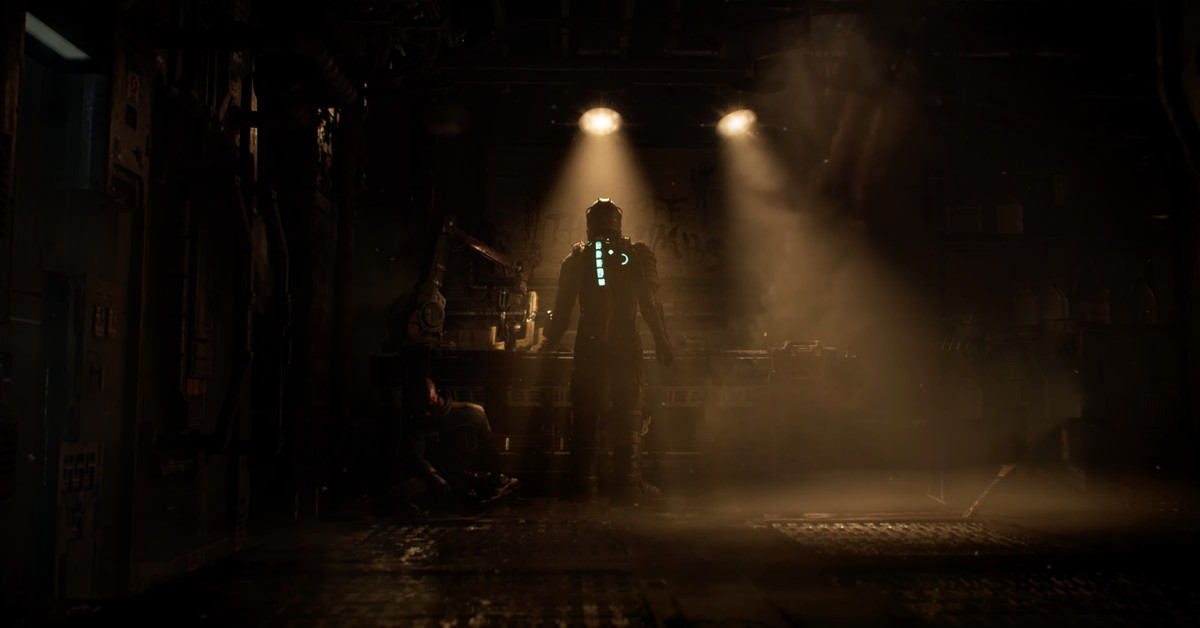The ReSpec newsletter is here: your weekly breakdown of the tech behind PC gaming
Digital Trends is launching a ReSpec newsletter covering the wide world of PC gaming. Here's everything you need to know about it.

 Corey Thompson / Digital Trends
Corey Thompson / Digital TrendsThe world of PC gaming moves fast. New titles are constantly being developed and discovered, game-changing hardware launches that could affect your next PC upgrade, and news breaks that can alter the stakes for some of the biggest PC companies in the world.
We’re so invested in this corner of the tech industry that we’re launching a newsletter, and it’s called ReSpec. Once you sign up, you’ll get your very own weekly breakdown of the tech behind PC gaming — delivered right to your inbox each Friday morning.
The newsletter will include three stories from the week. It could be a breakdown of a recent announcement, a conversation that took place over social media, or something else entirely. The goal is to bring you three stories that are grounded in what’s happening in the world of PC hardware that go beyond a simple product announcement.
But this isn’t just a place to regurgitate the news of the week in your inbox — you can expect my own analysis, opinions, and context, just in a bite-sized package.
In addition to the main stories, we’ll have the Min Max section, which is a place to talk about what I’ve been up to over the past week. It could be an interesting app that you should check out, or maybe a hidden gem on Steam that’s worth picking up. It’s a footnote to turn you on to something you may not have known about or provide short updates on what I’ve been up to.
That’s the setup of the newsletter we’re starting with, but it’s not the final form. We’ll continue working on the format and consider adding more sections, so if there’s something you want to see, you can find my email by clicking my byline above.
So, you might wondering — what makes me so qualified to write this newsletter? Well, PC gaming is what I live and breathe — I write about the topic day in and day out here at Digital Trends before logging off to go and play games on my PC. I think about it constantly, and I live it constantly, not only understanding the products and dynamics essential to reporting on the topic, but also understanding what it’s like to actually play games on a PC.
This meeting of professional and personal passion is what led to the ReSpec newsletter. It’s also a way to expand our ReSpec column.
If you’re unfamiliar, I already write a biweekly column that goes deeper on the intersection between PC hardware and gaming. We’ve covered such topics as why Xbox’s Quick Resume feature hasn’t come to PC yet, the confusing and misleading marketing for laptop GPUs, how one solo developer changed the Steam Deck forever, and so much more. The goal with a ReSpec column is to go deep by investigating or closely analyzing a topic that isn’t widely covered. Column entries are big, and they take a long time to put together. These are in-depth features, consisting of sourced interviews and my own testing, that tell unique stories about the tech behind PC gaming.
But in the fast-moving world of PC gaming, there’s a lot being left on the cutting room floor. That’s where the ReSpec newsletter comes into play.
You’ll still get a full, fat ReSpec ecolumn every two weeks on Sunday mornings. On weeks where I’m publishing a column entry, I’ll take some space in the newsletter to provide a synopsis about what the column covers. You could consider it sneak peak, or a summarized version of the column — regardless, you’ll get the full scope of what ReSpec is covering in the newsletter before new columns go live.
We’re adding to ReSpec, not taking away anything. If nerding out about graphics cards, PC games, and squeezing every last bit of performance out of your rig sounds like your jam, make sure to enter your email and sign up for the newsletter.
Editors' Recommendations
Proton and Nier: Automata — the untold story behind what makes the Steam Deck tick GPUs are on an apology tour How Hyte is tying your gaming PC together with a single cable A look back at the best (and worst) PC games I tested in 2023 Brighter isn’t better for OLED monitors. An expert told me the surprising reason whyJacob Roach is a writer covering computing and gaming at Digital Trends. After realizing Crysis wouldn't run on a laptop, he…
When a high frame rate can lose you the game
"Frames win games." That's been Nvidia's marketing campaign targeted at esports players since the introduction of Nvidia Reflex. It's a great slogan, catchy with the right amount of truth, and the perfect pairing for Nvidia's RTX technologies. In a new era of generated frames, though, it requires a bit of context.
Nvidia's DLSS 3 generates frames on RTX 40-series graphics cards, massively improving your performance. The trade-off, however, is an increase in latency, which hasn't been a big deal up to this point. In games like Ratchet and Clank: Rift Apart and Cyberpunk 2077, you don't need to worry about gaining a competitive edge. But now, we're seeing DLSS 3 for the first time in a competitive shooter: Call of Duty Modern Warfare 3. Originally, the game only included DLSS 3 in the single-player campaign, but after a few days, it was patched into all game modes, including Zombies and multiplayer.
Upgrade your PC or start from scratch? Here’s our definitive guide on the question
If you're no longer happy with the way your computer performs, it might be time to give your entire PC build a new look. Is it time to upgrade, or should you just buy a whole new PC? The choice can be tricky, but there are some general guidelines to follow.
A lot of things come into play, be it your budget, the performance of your current PC, or how much you can upgrade before it stops making sense. Here's how you can make the right decision for your needs.
Start with a look at your current rig
Don’t believe the hype — the era of native resolution gaming isn’t over
Native resolution is dead, or so the story goes. A string of PC games released this year, with the most recent being Alan Wake 2, have come under fire for basically requiring some form of upscaling to achieve decent performance. Understandably, there's been some backlash from PC gamers, who feel as if the idea of running a game at native resolution is quickly becoming a bygone era.
There's some truth to that, but the idea that games will rely on half-baked upscalers to achieve reasonable performance instead of "optimization" is misguided at best -- and downright inaccurate at worst. Tools like Nvidia's Deep Learning Super Sampling (DLSS) and AMD's FidelityFX Super Resolution (FSR) will continue to be a cornerstone of PC gaming, but here's why they can't replace native resolution entirely.
The outcry
Let's start with why PC gamers have the impression that native resolution is dead. The most recent outcry came over Alan Wake 2 when the system requirements revealed that the game was built around having either DLSS or FSR turned on. That's not a new scenario, either. The developers of Remnant 2 confirmed the game was designed around upscaling, and you'd be hard-pressed to find a AAA release in the last few years that didn't pack in upscaling tech.

 FrankLin
FrankLin 





































